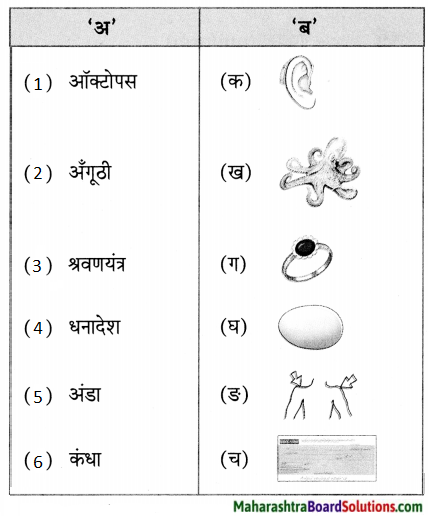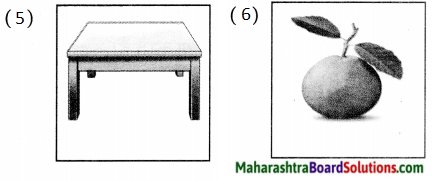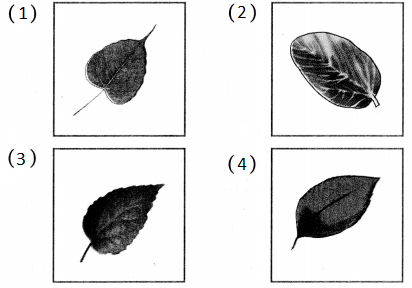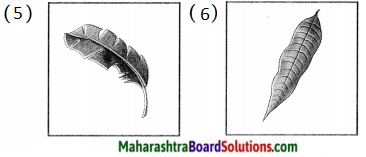Std 5 Hindi Lesson 15 Vyayam Question Answer Maharashtra Board
Balbharti Maharashtra State Board Class 5 Hindi Solutions Sulabhbharati Chapter 15 व्यायाम Notes, Textbook Exercise Important Questions and Answers.
5th Std Hindi Poem Vyayam Question Answer
5th Standard Hindi Digest Chapter 15 व्यायाम Textbook Questions and Answers
प्रश्न 1.
निम्नलिखित मुद्राओं से दी गई सूचनाओं के जोड़े मिलाइए:
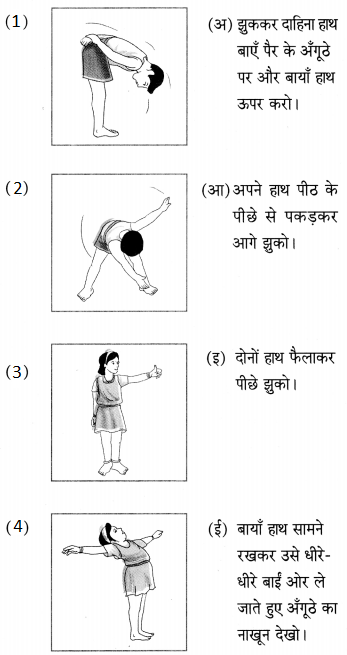
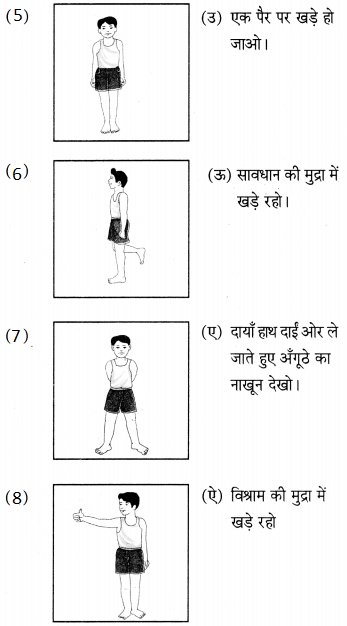
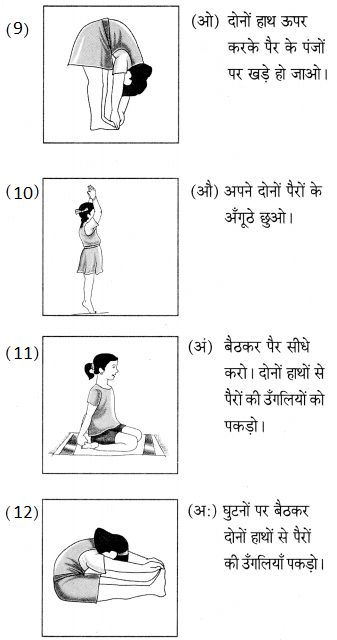
उत्तर:
- अपने हाथ पीठ के पीछे से पकड़कर आगे झुको।
- झुककर दाहिना हाथ बाएँ पैर के अंगूठे पर और बायाँ हाथ ऊपर करो।
- बायाँ हाथ सामने रखकर उसे धीरे-धीरे बाईं ओर ले जाते हुए अंगूठे का नाखून देखो।
- दोनों हाथ फैलाकर पीछे झुको।
- सावधान की मुद्रा में खड़े रहो।
- एक पैर पर खड़े हो जाओ।
- विश्राम की मुद्रा में खड़े रहो।
- दायाँ हाथ दाईं ओर ले जाते हुए अंगूठे का नाखून देखो।
- अपने दोनों पैरों के अंगूठे छुओ।
- दोनों हाथ ऊपर करके पैर के पंजों पर खड़े हो जाओ।
- घुटनों पर बैठकर दोनों हाथों से पैरों की उँगलियाँ पकड़ो।
- बैठकर पैर सीधे करो। दोनों हाथों से पैरों की उँगलियों को पकड़ो।
![]()
Hindi Sulabhbharati Class 5 Solutions Chapter 15 व्यायाम Additional Important Questions and Answers
निम्नलिखित प्रश्नों के उत्तर दीजिए:
प्रश्न 1.
आप सुबह कितने बजे उठते हैं?
उत्तर:
हम सुबह छह बजे उठते हैं।
प्रश्न 2.
लोग सुबह सैर करने क्यों जाते हैं?
उत्तर:
सुबह सैर करने से सेहत अच्छी रहती है।
प्रश्न 3.
आप विद्यालय में शारीरिक शिक्षण की कक्षा में क्या करते हैं?
उत्तर:
हम विद्यालय में शारीरिक शिक्षण की कक्षा में कभी कसरत करते हैं तथा कभी खो-खो, फुटबॉल, कबड्डी इत्यादि खेल खेलते हैं।
प्रश्न 4.
हमें व्यायाम क्यों करना चाहिए?
उत्तर:
स्वस्थ रहने के लिए हमें व्यायाम करना चाहिए।
![]()
प्रश्न 5.
क्या व्यायाम केवल लड़कों के लिए ज़रूरी है?
उत्तर:
नहीं, व्यायाम लड़के-लड़की दोनों के लिए ज़रूरी है।
प्रश्न 6.
व्यायाम से शरीर को क्या मिलता है?
उत्तर:
व्यायाम से शरीर को शक्ति मिलती है।
प्रश्न 7.
क्या आप विदयालय में होनेवाले खेलों में भाग लेते हैं? यदि हाँ, तो उनके नाम बताइए।
उत्तर:
हाँ, हम क्रिकेट, फुटबॉल, खो-खो, कबड्डी, हॉकी इत्यादि खेलों में भाग लेते हैं।
![]()
रिक्त स्थानों की पूर्ति कीजिए:
प्रश्न 1.
- सभी ……………. का अपना महत्त्व है।
- शरीर का …………….. व्यायाम के समय जागृत रहता है।
- सभी चाहते हैं कि हम कभी ……………. न पड़ें?
उत्तर:
- व्यायामों
- प्रत्येक भाग
- बीमार
प्रश्न 2.
योगासनों के कुछ प्रकारों के नाम लिखिए?
उत्तर:
पद्मासन, शवासन, पर्वतासन, भुजंगासन, हलासन।
![]()
व्यायाम Summary in Hindi
पाठ का सारांशः
व्यायाम का हमारे जीवन में बहुत महत्त्व है। व्यायाम से हम स्वस्थ रहते हैं। व्यायाम से शरीर को शक्ति मिलती है। हर एक व्यायाम-मुद्रा का अपना महत्त्व है। व्यायाम के समय शरीर का प्रत्येक भाग जागृत रहता है। व्यायाम की ज़रूरत हर किसी को होती है, क्योंकि जब तन स्वस्थ होगा, तभी मन भी प्रसन्न रहेगा। इससे शरीर में चुस्ती और फुर्ती आती है। शरीर के लिए व्यायाम की उतनी ही आवश्यकता है, जितनी अन्न, जल और वायु की।
5th Std Hindi Digest Pdf
- नंदनवन Class 5 Hindi Question Answer
- बूँदें Class 5 Hindi Question Answer
- योग्य चुनाव Class 5 Hindi Question Answer
- कश्मीरा Class 5 Hindi Question Answer
- पहचान हमारी – भाग (१) Class 5 Hindi Question Answer
- पेटूराम Class 5 Hindi Question Answer
- बधाई कार्ड Class 5 Hindi Question Answer
- करो और जानो Class 5 Hindi Question Answer
- नीम Class 5 Hindi Question Answer
- गड़ा धन Class 5 Hindi Question Answer
- मित्रता Class 5 Hindi Question Answer
- बचत Class 5 Hindi Question Answer
- पहचान हमारी – भाग (२) Class 5 Hindi Question Answer
- मैं सड़क हूँ Class 5 Hindi Question Answer
- व्यायाम Class 5 Hindi Question Answer
- बोलो और जानो Class 5 Hindi Question Answer



